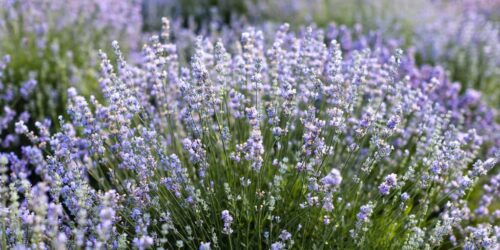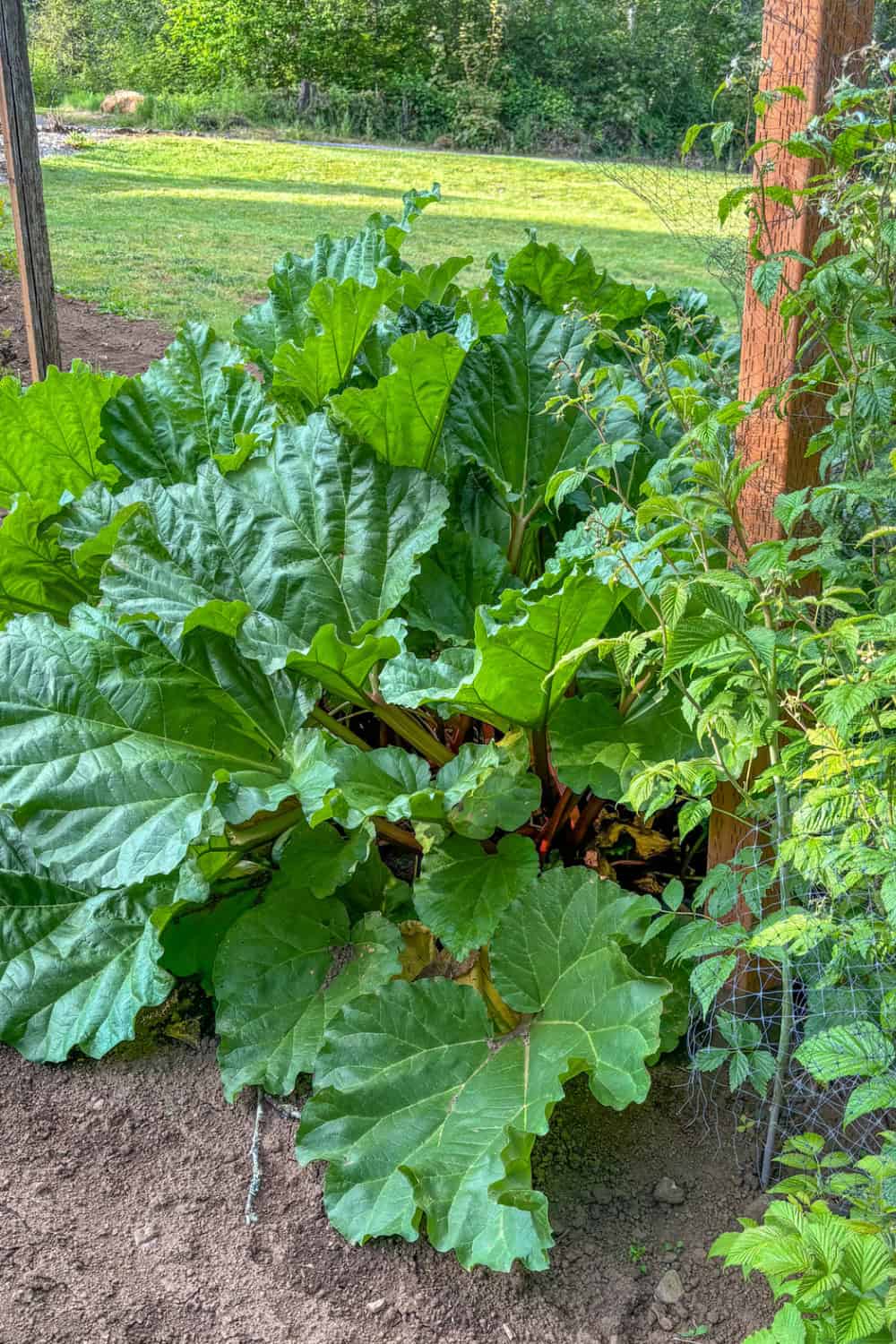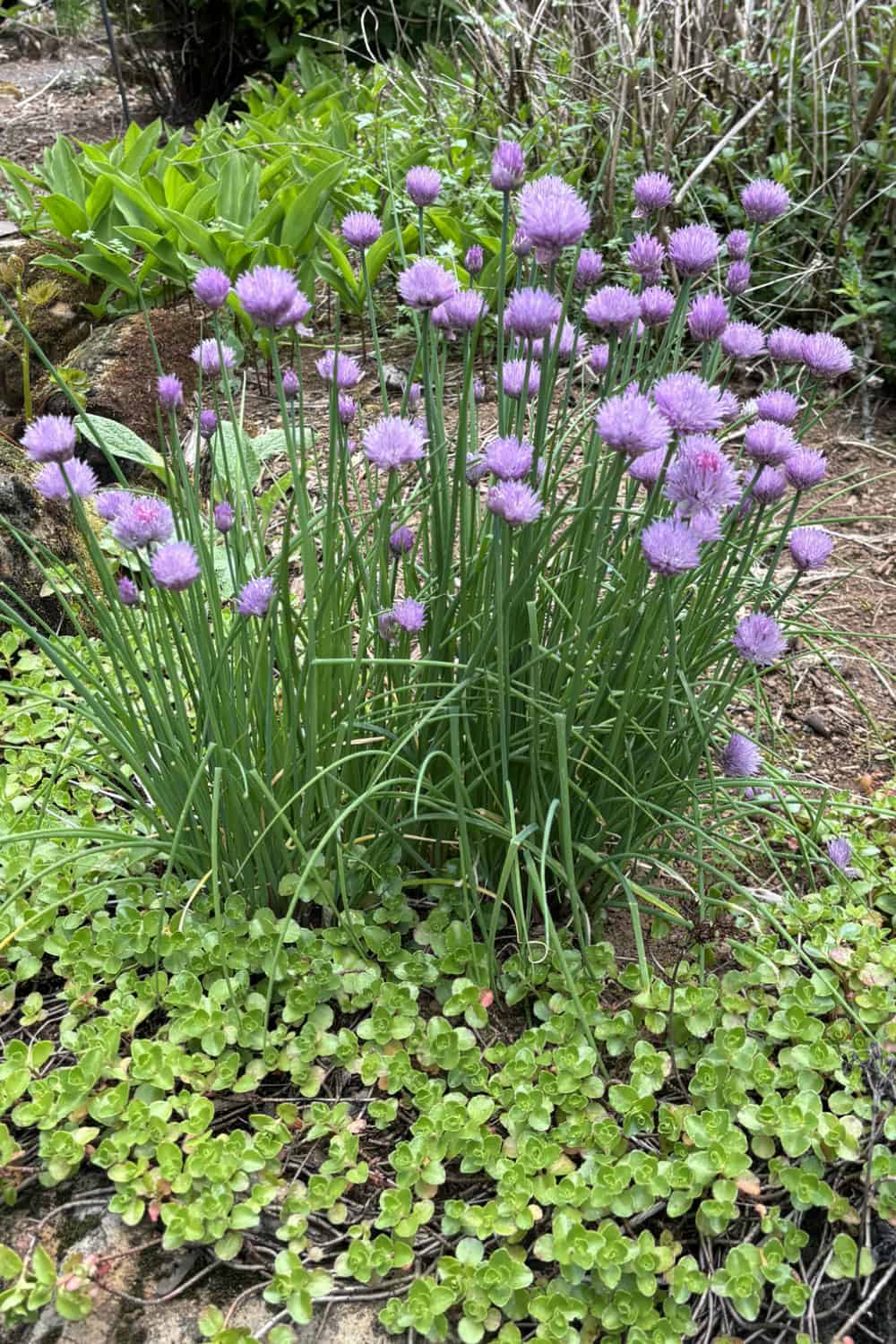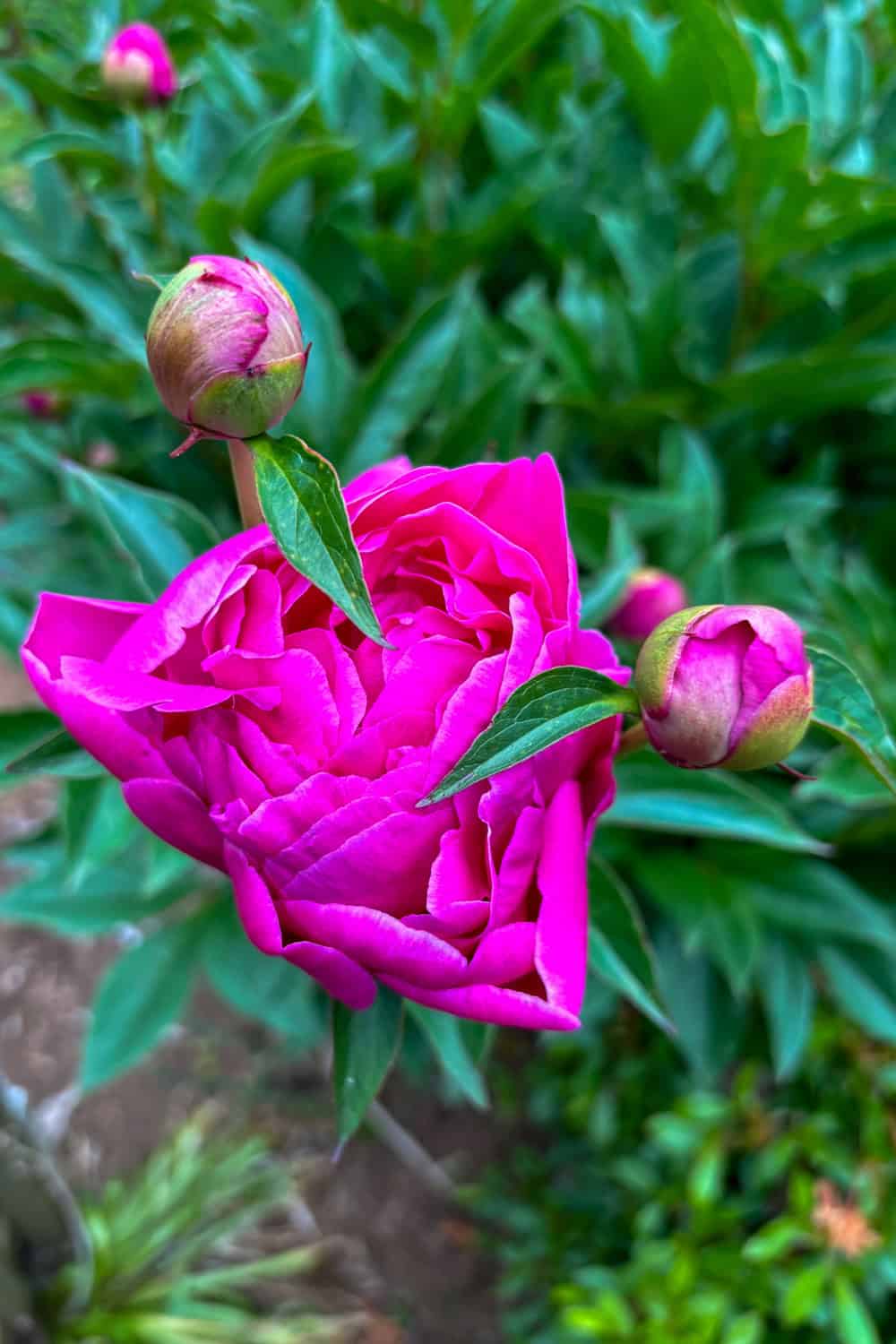Looking for the best deer resistant vegetables, herbs, and flowers to grow in your garden? Here’s a comprehensive list of deer resistant plants. What plants do deer hate the most? What vegetables do deer not like to eat? What vegetables will deer eat? What smell do deer hate the most? What herbs keep deer out of the garden? What herbs don’t deer eat? Get the answers to all of these questions and more from a Pacific Northwest gardener who grows vegetables, herbs, flowers, and fruit in an area where deer are prolific. Learn the secrets to growing deer resistant edibles right here. You’ll also learn how to keep deer away from the plants they love. Interested in keeping deer from eating your precious plants? The vegetable, herb, flower and fruit sections each include a handy printable list for future reference. Let’s get started!
Table of Contents
The Challenge of Deer in the Garden
On our small farm, we have a large vegetable garden plot and berry patch. In recent years, more flowers and herbs have been added. It’s now a combination vegetable/herb/flower/berry garden, and we have tried many things to keep the deer from dining on our tasty buffet. “Why not just put up a fence?” you may ask. Great question! Since the garden plot is so large, it’s much easier to use the tractor to rototill the dirt in the spring and fall. The tractor needs a place to enter and exit the garden, so we have debated putting in some kind of a moveable fence or gates that would allow for this. We have a similar situation in the orchard, where we do have a tall fence to protect the fruit trees. It’s a lot easier to get the mower through the orchard gate than it would be to get our tractor through, though.
There is also the question of aesthetics. When people come down our driveway, the vegetable garden plot is one of the first things they see, as it’s located closer to the road than our house. An effective deer fence would not be the most appealing, attractive structure. For now, we are sticking with our deer resistant planting strategy (planned strategically with our digital garden planner) and repelling deer from the plants they like without a fence. If you can show me an attractive deer fence with simple gates for the tractor, I’m in!
This post contains affiliate links, which means I may earn a small commission from qualifying purchases at no additional cost to you. Please read my Policies page for more information.
Deer Resistant Vegetables
Thankfully, the list of deer resistant vegetables is long. Deer tend to stay away from anything that is prickly, too fragrant, grown beneath the dirt, or is poisonous. If you want deer to pass by your garden, here are the plants they will generally avoid, along with a list of plants they like to eat. Do deer eat asparagus? Do deer eat squash plants? Do deer eat cucumbers? Do deer eat tomato plants? No, no, no and no. Hooray! If you must plant some on the list of plants that are attractive to deer, you can skip on down to the section about repelling deer from plants they like.
| Deer Resistant | Deer Attracting |
| Vegetables | Vegetables |
| Asparagus | Beans |
| Artichokes | Brussels sprouts |
| Beets | Cabbage |
| Carrots | Cauliflower |
| Cucumbers | Collard greens |
| Eggplant | Kale |
| Garlic | Lettuce |
| Leeks | Peas |
| Okra | Spinach |
| Onions | Swiss chard |
| Parsnips | |
| Peppers | |
| Potatoes | |
| Radishes | |
| Rhubarb | |
| Squash (including Zucchini) | |
| Tomatoes |
Deer Resistant Herbs
Since deer tend to avoid anything with a strong aroma, there are plenty of herbs to choose from. Does lavender keep deer away? Yes. You could use many of these herbs, such as lavender, as a border around your vegetable garden. Some are perennials, so you might want to put them on the edge if you rototill your garden every year, like we do. Check out the list to find which plants might work best for you.
| Deer Resistant | Deer Attracting |
| Herbs | Herbs |
| Anise | Basil |
| Borage | Clover |
| Chamomile | Parsley |
| Chives | |
| Cilantro | |
| Dill | |
| Fennel | |
| Horseradish | |
| Lavender | |
| Lemon Balm | |
| Mint | |
| Oregano | |
| Pulmonaria (Lungwort) | |
| Rosemary | |
| Sage | |
| Tarragon | |
| Thyme |
Deer Resistant Flowers
Some of the flowers that attract deer are annuals, some are perennials, and some are shrubs. Do marigolds repel deer? Yes, marigolds are a great deer-deterrent. They do not like the fragrance, so marigolds would make a terrific garden border. In fact, in years past, I have saved marigold seeds, then used them as a border year after year. Very economical! One note of caution about some of these deer resistant flowers: Deer may not eat the blooms, but may eat the seeds. That is the case with sunflowers. As with the previous lists above, deer resistant flowers outnumber the deer attracting flowers, so be encouraged. There are many flowers to choose from.
| Deer Resistant | Deer Attracting |
| Flowers | Flowers |
| Alyssum | Azalea |
| Anemone | Cosmos |
| Aster | Crocus |
| Astilbe | Hibiscus |
| Bachelor buttons | Hostas |
| Bearded iris | Hybrid tea roses |
| Bee balm | Hydrangeas |
| Bleeding hearts | Impatiens |
| Cleome | Lillies (including Daylillies) |
| Columbine | Pansies |
| Coreopsis | Rhododendrons |
| Daisies | Snowdrops |
| Daffodils | Sunflowers |
| Foxglove | |
| Heliotrope | |
| Larkspur | |
| Lobelia | |
| Lupine | |
| Marigold | |
| Peonies | |
| Poppies | |
| Rugosa roses | |
| Snapdragon | |
| Tansy | |
| Weigela |
Deer Resistant Fruit
The list of deer resistant fruit is very short. Our beloved rhubarb plant is used like a fruit in jam and other recipes, but is not technically a fruit. Growing fruit with deer around is a challenge, but it can be done. With some on the list, such as the lemon and lime, the deer generally leave the trees alone, but may eat the fruit and leaves if there aren’t any other options. If your favorite fruit is also a favorite of the deer, skip on down to the next section for some deer repellent solutions.
| Deer Resistant | Deer Attracting |
| Fruit | Fruit |
| Fig | Everything else! |
| Honey locust | |
| Lemon | |
| Lime | |
| Pawpaw |
Repelling Deer from Plants They Like
In our garden, we do grow some things that are highly attractive to deer, birds, and squirrels. They especially love the blueberries, raspberries and scarlet runner beans (a favorite ornamental for our bean towers). What are some easy, effective ways to repel or deter deer and other potential hungry garden visitors looking for a free meal? Here are a few strategies we have used.

What is the best homemade deer repellent? After hunting around and reading through many homemade concoctions, here are some common ingredients that appeared often. If you have any of these on hand, test out a combination to see what is most effective in your garden. According to an article posted on the City of Ann Arbor, Michigan website, the most effective deer repellents contain (sorry, don’t want to get too gross here) predator urine. So, if you have a dog, you could let the dog use the garden as a bathroom occasionally.
Not appealing? Here are some other common homemade repellent ingredients: hot pepper sauce, eggs, dish soap or deodorant soap, hot pepper flakes, vinegar, blood meal, bone meal, human hair, and garlic. Some of the concoctions are smelly, which is the idea. Some give the plants a bad taste and need to be washed off before human consumption. You could spray strips of cloth with an odiferous mixture, then hang the strips around the edge of the garden. You can also purchase commercially-made deer repellent, such as Liquid Fence.
The problem we have in our Pacific Northwest garden is that the frequent rains make it necessary to reapply the repellent quite often. Expense is a drawback. Although we use deer repellent when we need to, there is something else which has been even more effective in keeping deer away.
Our favorite deer deterrent is netting. Although it is called bird netting in many cases, it is very effective at keeping deer from eating our berries.
It’s reusable, and it really doesn’t take very long to cover the plants. In order to allow room for plant growth, I have often created a sort of tent over the vegetables. I put one tall pole or stake at the center, then fasten the netting to the ground, with stakes, similar to the ones in the set shown above. It’s very effective, economical, and doesn’t take away from the appearance of the garden too much.
Free Online Garden Planner Layout Template
Now that you know which are the best companion plants for rhubarb, you might need a way to plan your garden layout. Whether you are planting vegetables, flowers, or herbs near your rhubarb plant, this online garden planner can help you visualize your design and bring it to life. With garden tasks that need your attention, this is one way to save time.
It’s fully customizable when you make your own copy and includes two editable chart pages for noting planting specifications.
Get my free online garden layout planner template!
Organize Your Garden Tasks with a Free Garden Planner Notebook
As a result of needing to keep track of garden tasks throughout the year, I decided to begin a garden planner notebook. It has a page for each month, along with notes pages. If a garden planner notebook seems like a good idea to you, good news! You can get it here!
Get the garden notebook!
May all of your deer-resistance efforts meet with great success!
Lisa Mitchell is a wife, mom, and school librarian who likes to grow fruit, vegetables, and flowers on her family’s small Pacific Northwest farm. To learn more about what this website has to offer gardeners, click on over to the Garden page.
Want more great garden, food, or travel ideas? Follow FluxingWell on Pinterest, Flipboard, Facebook, Instagram, and X for the latest posts, tips, and inspiration.











It’s great to have all this information about deer-resistant plants in one place—so useful!
Although I live in the city now, I grew up in the countryside, and always had deer who would come and pay a visit. Great to know that peppers and potatoes are deer resistant. This is so handy!
I’m glad you think this is useful. Maybe you’ll get the chance to put it to the test if you ever live in the country again.